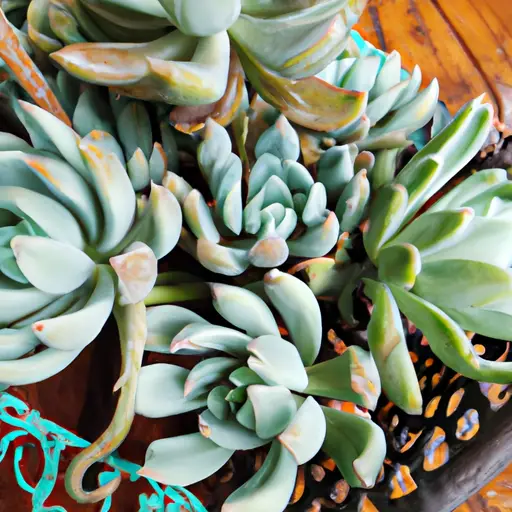A Thriving Succulent Garden: The Beauty of Succulents in Containers
Succulents have become all the rage in recent years, and for good reason. Their unique shapes, vibrant colors, and low-maintenance nature make them a perfect addition to any garden or home. One of the best ways to showcase these gorgeous plants is by creating a thriving succulent garden in containers. Not only does this allow for easy care and versatility, but it also adds a touch of beauty and charm to any space.
The first step in creating a thriving succulent garden is selecting the right containers. Succulents thrive in well-draining soil, so it’s important to choose pots with drainage holes to prevent waterlogging. The containers can be made of various materials such as terracotta, ceramic, or even repurposed items like old teapots or wooden crates. Think outside the box and get creative with your container choices – the possibilities are endless!
Once you have your containers ready, it’s time to choose the perfect succulents for your garden. With an array of options available, there is something to suit everyone’s taste. From the popular Echeverias with their rosette-shaped leaves to the trailing Sedums that cascade beautifully over edges, there are endless choices to create an eye-catching display.
When selecting succulents, consider their individual light requirements and growth habits to ensure they will thrive together in one container. Some varieties prefer full sun while others can tolerate partial shade. It’s also important to consider their size at maturity – placing slow-growing varieties next to fast growers may result in overcrowding over time.
Now that you have chosen your containers and succulents, it’s time to create a well-draining soil mix specifically formulated for succulents. Combine equal parts potting soil, perlite or pumice (for drainage), and coarse sand or crushed granite (for added grit). This ensures the soil retains just enough moisture without becoming waterlogged, which is detrimental to succulents’ health.
When planting your succulents, make sure to leave enough space between them for growth while also considering their aesthetic appeal. Grouping different types of succulents with varying heights, colors, and textures creates a visually pleasing arrangement. Don’t be afraid to experiment and mix different varieties – the more diverse the garden, the more captivating it becomes.
After planting your succulents in their containers, water them thoroughly until you see water draining from the bottom. However, it’s important not to overwater as this can lead to root rot. Succulents prefer infrequent but deep watering. Allow the soil to dry out completely between watering sessions – this encourages healthy root growth and prevents issues caused by excess moisture.
One of the main advantages of container gardening with succulents is their adaptability to various environments. You can easily move them indoors during colder months or when harsh weather conditions arise. They make excellent indoor plants, adding a touch of nature and beauty to any room.
To ensure optimal growth, provide sufficient sunlight for your container succulent garden. Most varieties require at least six hours of sunlight per day, preferably in the morning or late afternoon when the intensity is less harsh. If you’re growing them indoors, place them near a south-facing window or provide supplemental grow lights if natural light is limited.
Proper care also includes regular fertilizing during the growing season. Use a balanced liquid fertilizer specifically formulated for succulents and follow the instructions on how often and how much to apply. Over-fertilizing can be detrimental to succulent health, so it’s crucial not to exceed recommended doses.
As with any garden, regular maintenance is necessary for a thriving succulent container garden. Remove dead leaves or spent flowers regularly to promote air circulation and prevent pests or diseases from taking hold. Additionally, inspect your succulents for signs of overcrowding or rootbound issues. If necessary, gently remove the succulents from their containers, prune the roots, and repot them in a larger container to allow for continued growth.
In conclusion, creating a thriving succulent garden in containers is a wonderful way to showcase the beauty and versatility of these plants. With the right containers, well-draining soil mix, carefully selected succulents, proper watering techniques, and adequate sunlight, you can create a stunning display that brings joy and tranquility to any space. So get creative, embrace your green thumb, and let your succulent garden flourish!














